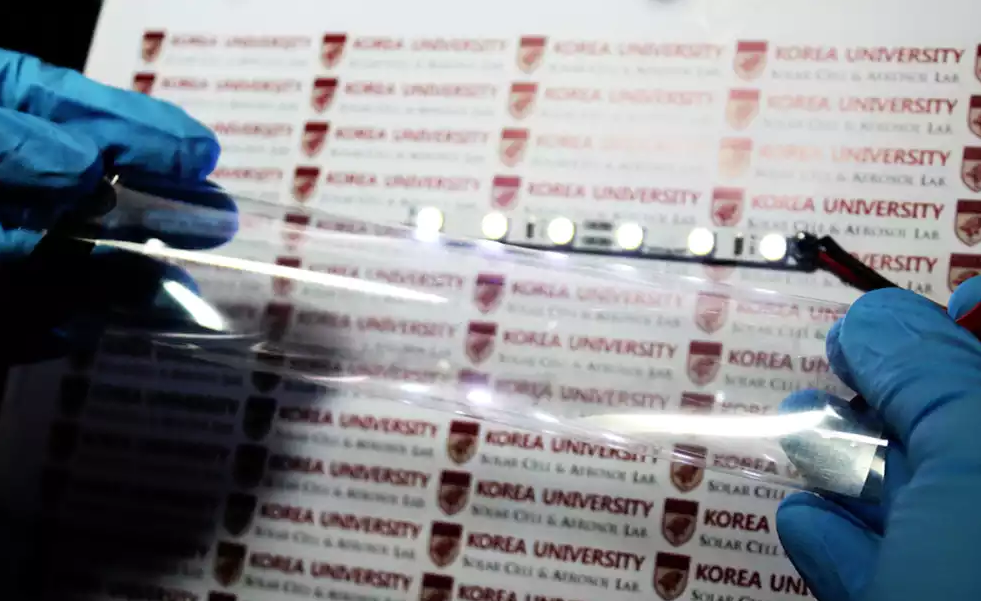Researchers at the University of Korea and the University of Illinois developed a new thin film packed with a combination of features. Being highly electrically conductive, bendable, stretchable, and nearly transparent, the film could help build more efficient solar panels, self-heating smart windows, flexible displays, and high-performance cooling surfaces.

A new thin sheet combining high transparency and high conductivity could have future applications in touchscreens, solar cells, and flexible displays. Image source: Korea University.
The film’s most striking property is the useful combination of transparency and conductivity. With most materials, one comes at the expense of the other because the particles that carry electric charge tend to interact with light, turning the material opaque. Researchers Alexander Yarin, Sam Yoon, and their team found a way around this limitation by building a web of conductive copper fiber with holes between them large enough for light to still make its way through.
To create the film, Yarin, Yoon, and their colleagues first coated polyacrylonitrile (PAN), a flexible polymer with thin fibers, with small concentrations of metal to make it conductive. Then they spun the polymer into a deeply intertwined web and coated the fibers once more, this time with a layer of copper. This resulted in a huge tangle in which the copper fibers, fused as junctions, were able to conduct electricity with little resistance while the large gaps between the fibers allowed the film to be 92% transparent.

The conductive copper plated-fibers are entangled, and the spaces between them make the film transparent. Image source: Korea University.
A material such as this could be a strong choice for the transparent conducting electrodes (TCEs) that are featured in solar panels and smart windows. The industry-standard material for building TCEs is indium-doped tin oxide (ITO), but indium is brittle, sacrifices conductivity for transparency, and could possibly run out at some point in the future. On the other hand, the copper-plated nanofibers establish what the journal Advanced Materials says is a “world-record combination of high transparency and low electrical resistance,” and are also equipped with excellent mechanical properties.
According to the researchers, the film can be stretched by 580% and still retain about a fifth of its conductivity, or it can be bent at a 5-mm radius for a thousand times and show no noticeable change in performance.
Aside from future applications in touchscreens, solar cells, and flexible displays, the researchers could transfer the fibers to any surface, creating nano-textured materials that can dissipate heat with high efficiency. Another interest, according to Yoon, will be to exploit the resistive heating effect and use the film as a heater for a smart window.
Source: Korea University
Advertisement
Learn more about Electronic Products Magazine





